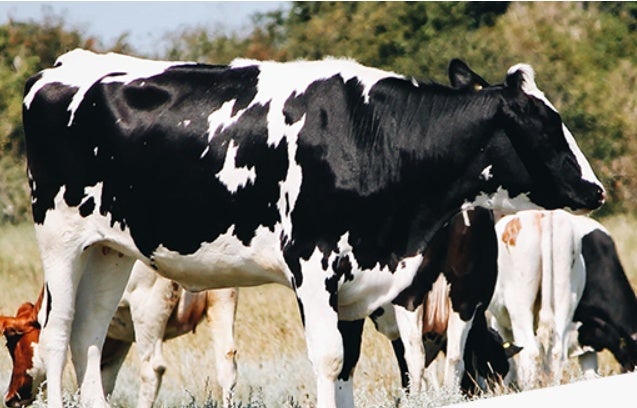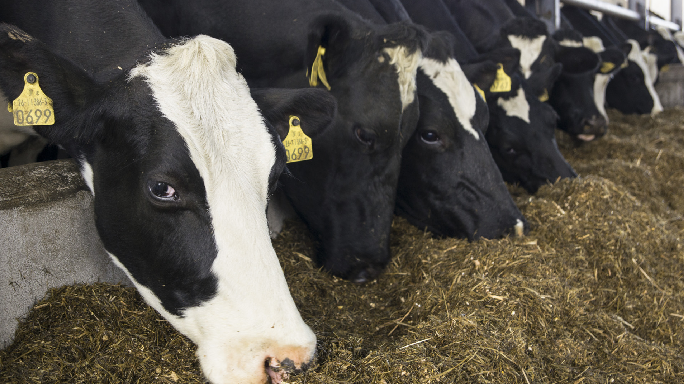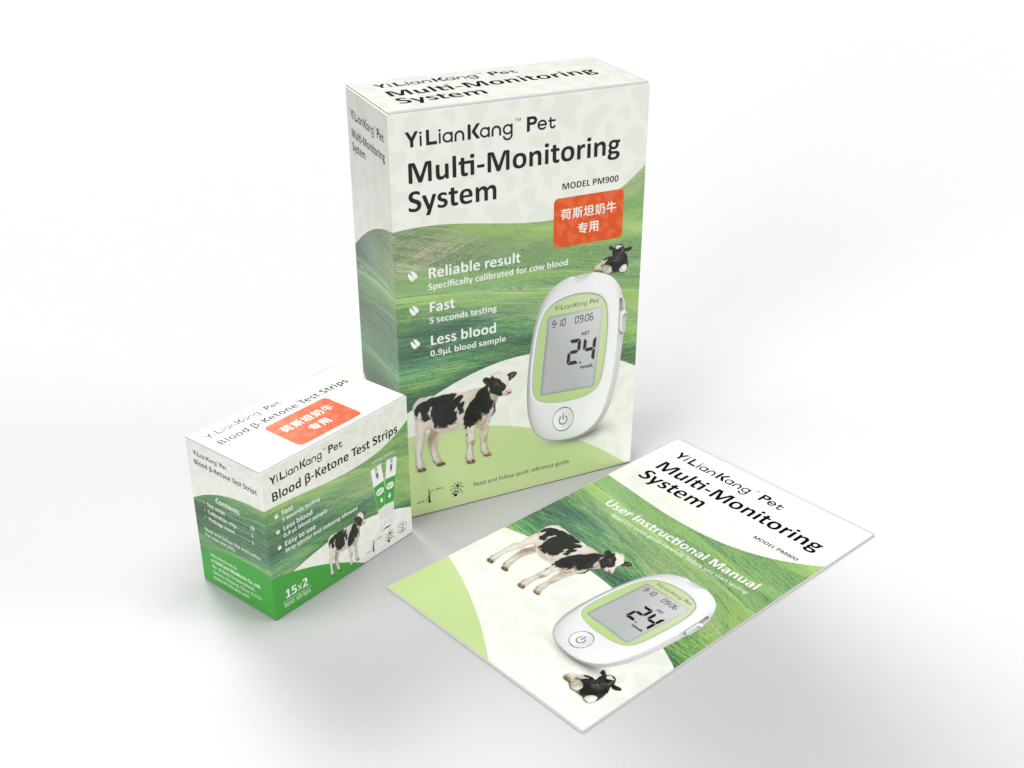Ketosis in Cattle – Detection and Prevention
Cows suffer from ketosis when a too high energy deficit occurs during the start of lactation. The cow will use up body reserves, releasing toxic ketones. This article is intended to provide a better understanding of the challenge of controlling ketosis for dairy farmers.
What is ketosis?
Dairy cows use the vast majority of their energy for producing milk. To be able to continue doing this, a cow needs to consume a lot of feed. After calving, milk production must start quickly. The cow is genetically predisposed to always give priority to milk production, even if this is at the expense of its own energy and health. If the energy provided by the ration is not sufficient, the cow will compensate by using up her body reserves. If excess of fat mobilization occurs, then ketone bodies may appear. When these reserves are used up, ketones are released into the bloodstream: in limited amounts these ketones don’t present a problem, but when larger concentrations are produced–a condition known as ketosis–the cow will appear less active and her performance will start to suffer.

The causes and consequences of ketosis in cows
Cows suddenly need a much larger amount of energy after calving and logically therefore need much more feed to meet this demand. Large amounts of energy are required for starting up and maintaining milk production. If this energy is lacking in the cow’s diet she will start to burn her reserves of body fat. This releases ketones into the bloodstream: when the concentration of these toxins exceeds a threshold, the cow will become ketonic.
Cows affected by ketosis will eat less and, by consuming her own body reserves, her appetite will be further suppressed, thus instigating a downward spiral of negative effects.
If body fat mobilization is excessive it can surpass the liver capacity to use that fat, accumulation in the liver will occur, which can result in‘fatty liver’. This causes liver dysfunction and can even cause permanent damage to the liver.
Consequently, the cow will become less fertile and more susceptible to all kinds of diseases. A cow suffering from ketosis, needs extra attention and possibly veterinary treatment.
How to prevent ketosis?
As with many diseases, ketosis occurs because there is an imbalance in the body. The cow must provide more energy than she can absorb. This in itself is a normal process, but when not managed effectively and ketosis occurs, it immediately affects the reserves and resistance of the animal. Ensure that your cows have access to a high quality, palatable and well balanced diet. This is the first important step. Furthermore, you need to support your cows optimally in their health and calcium metabolism. Remember, prevention is always better and cheaper than cure. A healthy cow eats more, can produce more milk efficiently and will be more fertile.
Learn how to support the immune capability of dairy cows and optimize calcium metabolism around calving, which may result in healthier, more productive dairy cows.
The symptoms of ketosis sometimes resemble those of (sub)clinical milk fever. The cow is slow, eats less, gives less milk and fertility goes down considerably. There may be an acetone smell in the cows breath due to the released ketones. The challenging thing is that the signs can be obvious (clinical ketosis), but also virtually invisible (subclinical ketosis).
Pay close attention to recognise the differences between ketosis and (sub) clinical milk fever, the symptoms can sometimes resemble.
Therefore, it is necessary to use relevant measures to detect the ketosis of dairy cows in a timely manner. It is suggested to use a special ketosis detection method for dairy cows to detect ketosis: YILIANKANG ® Pet Blood Ketone Multi-Monitoring System And Strips.Analysis of blood BHBA (ß-hydroxybutyrate) levels is considered to be the gold standard method for ketosis testing in dairy cows. Specifically calibrated for bovine blood.
In summary, new advancements of on farm technology to monitor ketosis has made the provided a variety of choices in to assist in making diagnosis of ketosis easier and quicker.
Post time: Dec-09-2022


